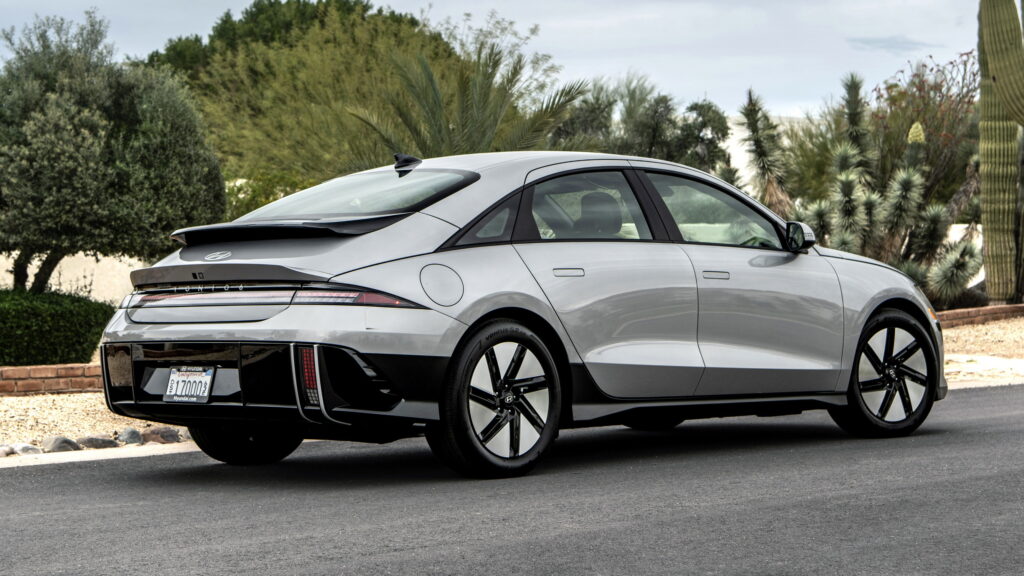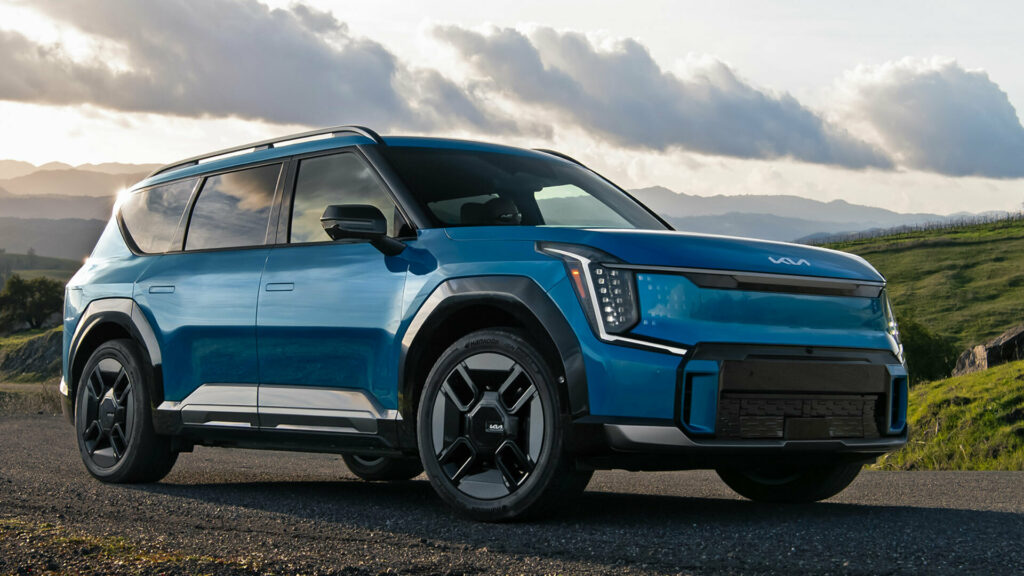As EV Sales Crash Badly, Hyundai Gets Its Lifeline From Elsewhere

- Hyundai Ioniq 5 sales fell sharply after federal tax credits ended.
- Ioniq 6 demand also dropped significantly with sales hitting new lows.
- Hybrids surged strongly marking their best monthly performance yet.
Hyundai is selling more hybrids in the United States than ever, a result that surely has executives reaching for the champagne. The mood, however, is muted by a sharp downturn in the company’s electric vehicle fortunes. Since the federal EV tax credit expired on September 30, demand has plunged, leaving Hyundai’s battery-powered lineup scrambling to regain its footing
How Low Can It Go?
The Ioniq 5 remains Hyundai’s best-selling EV in the US, though November brought little reason to celebrate. Only 2,027 units found buyers across the country, a steep 59 percent drop from the 4,989 sold in November last year.

There was some consolation in the fact that this figure edged up slightly from October’s 1,642 sales, but the wider picture is still uneven. Year-to-date results show a modest 12 percent improvement over 2024, totaling 44,760 cars sold.
Read: Hyundai And Kia EV Sales Collapse After Tax Credits Vanish Overnight
Things have been equally as bad for the Ioniq 6, with just 489 being sold this November, a decline of 56 percent. Cumulative sales have also slipped, from 11,055 cars in 2024 to 10,019 so far this year, marking a 9 percent decline.
The seven-seat, three-row Ioniq 9 wasn’t available last year, but it remains a relatively slow seller. A total of 315 found new homes last month, down slightly from the 317 sold in October. Year-to-date, 4,809 have been sold.
Hyundai Sales November 2025
| Vehicle | Nov-25 | Nov-24 | % Chg | 2025 YTD | 2024 YTD | % Chg |
| Elantra | 10,389 | 11,344 | -8% | 136,825 | 125,113 | +9% |
| Ioniq 5 | 2,027 | 4,989 | -59% | 44,760 | 39,805 | +12% |
| Ioniq 6 | 489 | 1,121 | -56% | 10,019 | 11,055 | -9% |
| Ioniq 9 | 315 | 0 | – | 4,809 | 0 | – |
| Kona | 5,783 | 6,133 | -6% | 68,030 | 76,326 | -11% |
| Nexo | 0 | 0 | 0% | 5 | 93 | -95% |
| Palisade | 9,906 | 8,982 | +10% | 112,237 | 99,757 | +13% |
| Santa Cruz | 1,537 | 2,393 | -36% | 23,889 | 29,991 | -20% |
| Santa Fe | 14,004 | 12,376 | +13% | 127,964 | 105,701 | +21% |
| Sonata | 4,018 | 6,971 | -42% | 54,238 | 61,701 | -12% |
| Tucson | 23,762 | 20,178 | +18% | 212,037 | 185,954 | +14% |
| Venue | 2,059 | 1,521 | +35% | 27,943 | 22,808 | +23% |
| Total Sales | 74,289 | 76,008 | -2% | 822,756 | 758,304 | +8% |
Hyundai’s total November sales have fallen 2 percent from November last year to 74,289 units. So for this year, it still remains in the green, shifting 822,756 vehicles, an 8 percent rise from the 758,304 sold during the first 11 months of 2024.
Hybrids to the Rescue
The big story, though, is hybrids. Sales of electrified models jumped 42 percent, making November Hyundai’s strongest hybrid month on record. That surge has been critical in offsetting the EV slump and maintaining overall growth through the final quarter.
Among individual models, several performed particularly well. In November, The Palisade rose 10 percent to 9,906 units, Santa Fe gained 13 percent to 14,004, and Tucson continued its strong run with an 18 percent increase to 23,762. Even the pint-sized Venue grew 35 percent to 2,059 units.
The Sonata, meanwhile, took a noticeable hit in November, dropping 42 percent year-over-year to 4,018 sales, bringing its year-to-date total to 54,238, down 12 percent from the same period in 2024.
For now, Hyundai’s U.S. lineup shows a clear divide between hybrid gains and weakening EV demand. The next few months will show whether that hybrid momentum can do enough to steady the company’s position in a softening electric market.
















